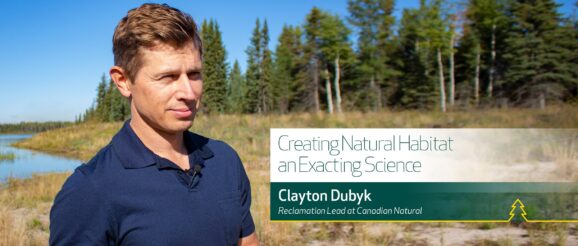Creating Natural Habitat an Exacting Science | Canada’s Oil Sands Innovation Alliance – COSIA

The majority (about 80 per cent) of Canada’s oil sands reserves are located deep below ground and are recovered through in situ operations. These operations use water to produce steam that heats the underground bitumen, allowing it to flow easily to the surface. Up to 90 per cent of this water is then recovered from operations and recycled back into the facility.
The Alberta government requires all disturbed land in the oil sands to be returned to a sustainable natural habitat. The process of returning land to nature is called land reclamation and it’s an exacting science. Over the years, oil sands companies have become world experts at reclamation by developing novel ways to reclaim disturbed sites better and faster.
Reclamation actually begins in the planning stages before drilling any wells or starting construction. In fact, a comprehensive land reclamation plan is a mandatory part of a company’s application for government approval of an oil sands project. Once approval is received, reclamation activities begin almost immediately and are closely monitored and reported on throughout the facility’s life.
Land reclamation includes things like contouring the ground to encourage vegetation growth and replacing soil and other organic materials that were salvaged prior to facility construction. There is also seeding or planting of native vegetation, which is then monitored to see how well it grows on site.
Land reclamation best practices continue to evolve as companies find ways to restore disturbed land more quickly and effectively, helping trees and shrubs thrive and wildlife to return sooner.
Find out more about land reclamation at in situ sites from Clayton Dubyk, Reclamation Lead at Canadian Natural.
Sign up for our newsletter to receive updates on the work that COSIA members are doing.
